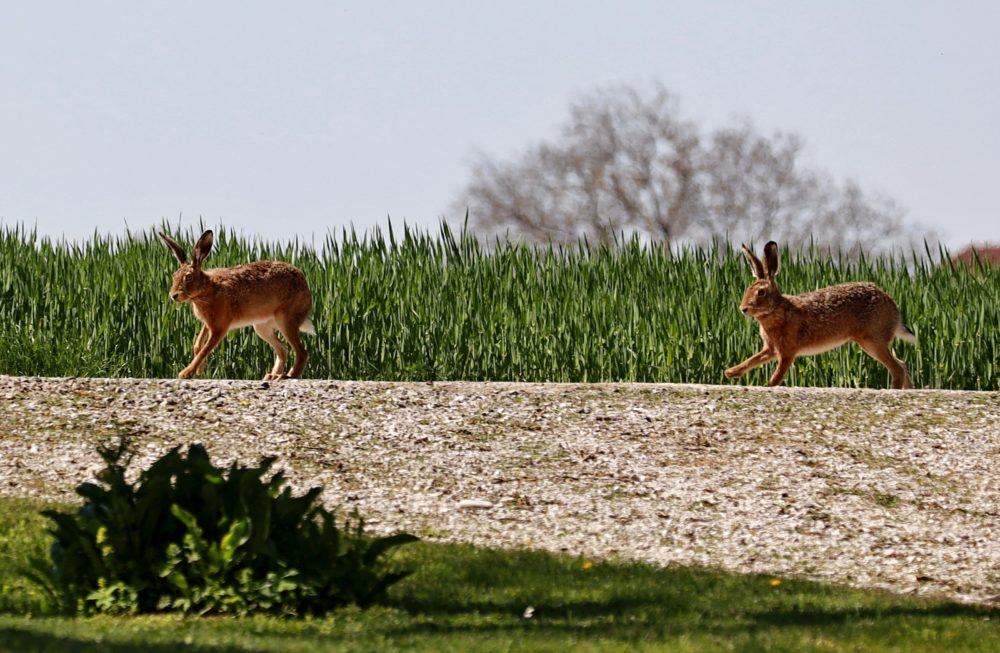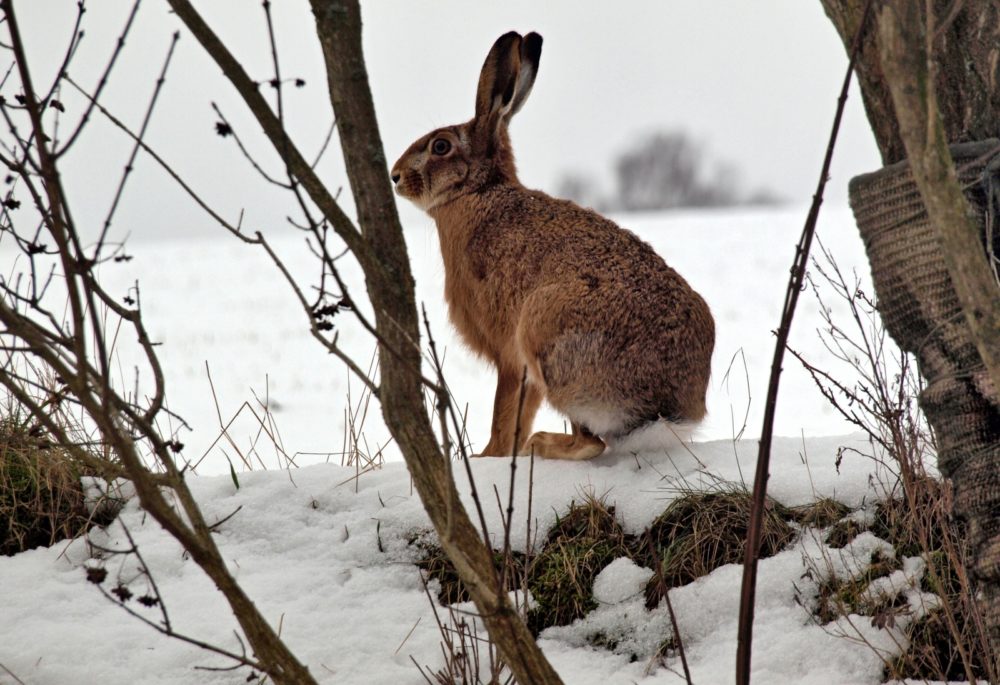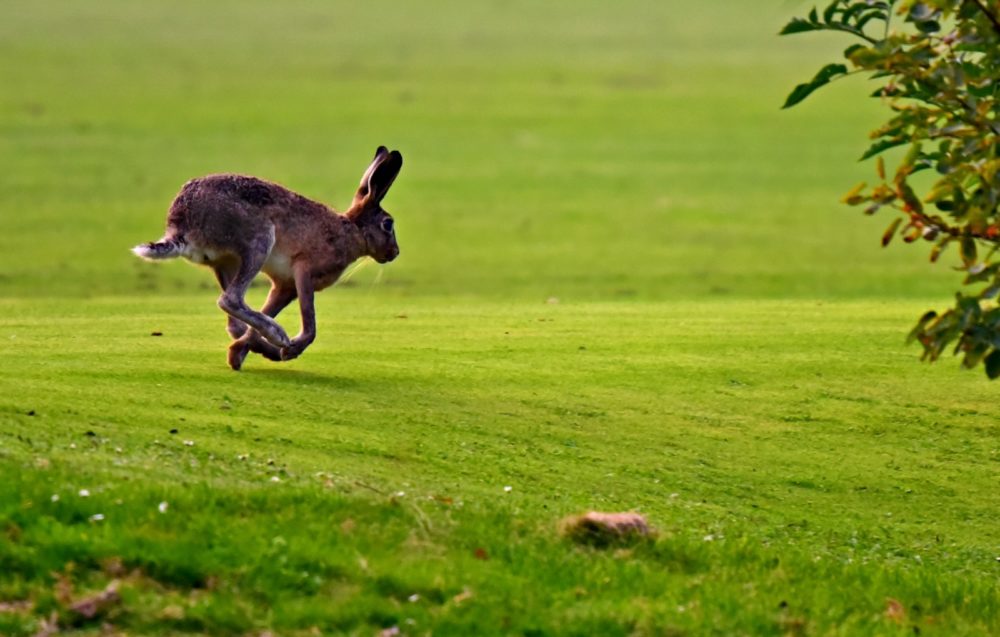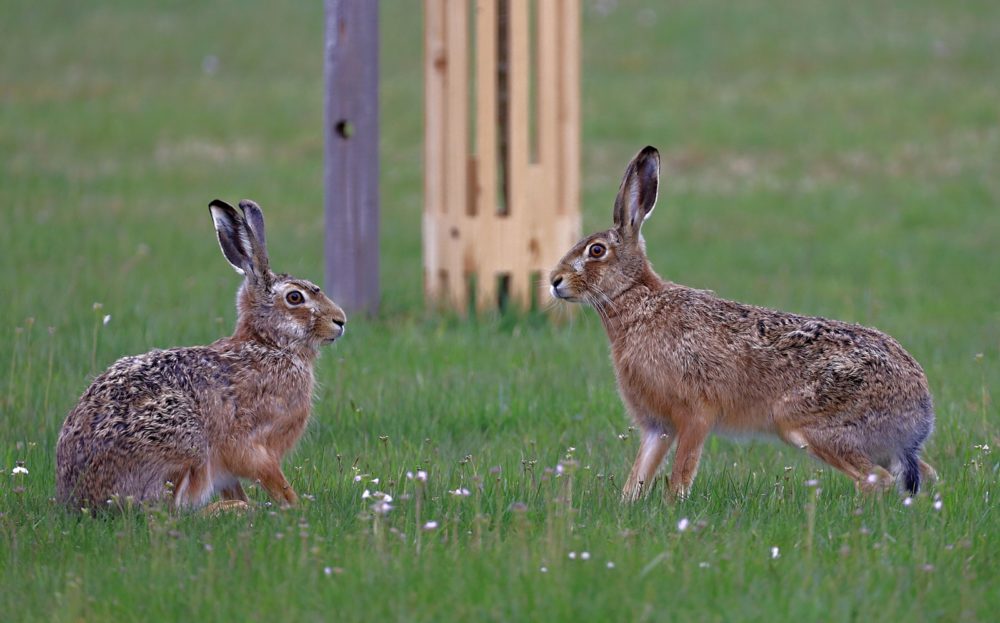The prosperity of European hare depends on the structure of agricultural landscape
 The negative impact of intensive farming on plant and animal species’ environment is becoming increasingly evident in nature. One approach to farming management is the expansion of individual land blocks. This results in a decrease in the diversity of crops and wild plants, leading to a significant reduction in biodiversity and an overall homogenization of the agricultural landscape. The FGMRI (VÚLHM, v. v. i.) Game Management Department has been monitoring the European hare for a long time, as it is considered a “bioindicator” species in this landscape.
The negative impact of intensive farming on plant and animal species’ environment is becoming increasingly evident in nature. One approach to farming management is the expansion of individual land blocks. This results in a decrease in the diversity of crops and wild plants, leading to a significant reduction in biodiversity and an overall homogenization of the agricultural landscape. The FGMRI (VÚLHM, v. v. i.) Game Management Department has been monitoring the European hare for a long time, as it is considered a “bioindicator” species in this landscape.
The homogenization of agricultural landscapes has led to a decline in the population of small animals, especially ground-nesting bird species such as field partridge, northern lapwing, and corn crake. This has resulted in a significant reduction in the abundance of these bird species, with up to a 60% decrease in Europe since 1980. Meanwhile, wild ungulates have responded to these changes by increasing in population.
Some species of wild animals such as the European hare respond unfavourably to changes in the agricultural landscape. The expansion of agriculture and the uniformity of the environment have a significant impact on the size of the European hare’s living area, which is one of the factors that may affect their survival in the current agricultural landscape. Studies have shown that larger home ranges are associated with relatively unproductive environments in lagomorphs. In contrast, hares avoid monocultures and prefer a varied landscape if available.
 In a landscape dominated by intensive farming, hares face significant challenges in finding suitable habitats and food sources throughout the year. During the lactation period, female hares require a food rich in fats and lipids, which is often found in agricultural crops, especially cereals. However, they prefer to choose natural food sources such as wild herbs, grasses, and field weeds if available in the landscape. Having access to a greater food supply also reduces the time required for grazing, which in turn reduces the risk of predation. The lack of suitable habitats can be limiting for hares, increasing the risk of predation for juvenile individuals and negatively impacting their thermoregulation, leading to increased energy costs. The designation of hares as a bioindicator species means that their population can be used to assess the quality of the agroecosystem environment in a given location.
In a landscape dominated by intensive farming, hares face significant challenges in finding suitable habitats and food sources throughout the year. During the lactation period, female hares require a food rich in fats and lipids, which is often found in agricultural crops, especially cereals. However, they prefer to choose natural food sources such as wild herbs, grasses, and field weeds if available in the landscape. Having access to a greater food supply also reduces the time required for grazing, which in turn reduces the risk of predation. The lack of suitable habitats can be limiting for hares, increasing the risk of predation for juvenile individuals and negatively impacting their thermoregulation, leading to increased energy costs. The designation of hares as a bioindicator species means that their population can be used to assess the quality of the agroecosystem environment in a given location.
The European hare’s abundance and ecology have mostly been studied in Western Europe. However, the Czech Republic, which has the largest area of individual land blocks, has experienced negative effects on the hare population due to the transformation of the agricultural landscape. Scientists from the Game Management Department have published their first findings on hare populations in a “variegated” and intensively farmed landscape in the article “Direct effect of farmland structure on European hare home range size: Preliminary results from the Czech Republic“ (Přímý vliv struktury zemědělské krajiny na výměru domovských okrsků zajíce polního: Předběžné výsledky z České republiky) which was featured in the journal Reports of Forestry Research 3/2023. The study was focused on verifying the ecology of the European hare in the Czech Republic by using GPS telemetry to monitor the physical activity of marked individuals. The main goal was to determine the area of home districts in the spring months and to evaluate the differences in the area of home districts in an intensively or conventionally farmed agricultural landscape compared to a “variegated” and highly diversified landscape.
 An assessment was carried out in the Central Bohemia region to determine the impact of farming on the ecology of the European hare in an area with a varied landscape and an average land block size of approximately 4.31 hectares. The behaviour of the hares in this area was compared to a neighbouring location about 2.5 km away, which is farmed conventionally and has an average land block size of approximately 15.11 hectares. A telemetry study was conducted to determine the average home range of the hares, including all positional points in which the monitored individual moved. In the intensively farmed landscape, the average home range was found to be approximately 129.96 hectares. In contrast, in the neighbouring colourful locality, the home range was only 18.62 hectares. Moreover, the average size of the core home precinct, i.e., 50% of the position points, was 16.94 hectares in the intensively farmed countryside, while it was only 1.34 hectares in the varied countryside.
An assessment was carried out in the Central Bohemia region to determine the impact of farming on the ecology of the European hare in an area with a varied landscape and an average land block size of approximately 4.31 hectares. The behaviour of the hares in this area was compared to a neighbouring location about 2.5 km away, which is farmed conventionally and has an average land block size of approximately 15.11 hectares. A telemetry study was conducted to determine the average home range of the hares, including all positional points in which the monitored individual moved. In the intensively farmed landscape, the average home range was found to be approximately 129.96 hectares. In contrast, in the neighbouring colourful locality, the home range was only 18.62 hectares. Moreover, the average size of the core home precinct, i.e., 50% of the position points, was 16.94 hectares in the intensively farmed countryside, while it was only 1.34 hectares in the varied countryside.
Based on the pilot results of telemetric monitoring of captured individuals, it is evident that hares tend to use a much smaller area in a variable landscape during the spring months, compared to an intensively farmed agricultural landscape with larger areas of individual land blocks and a relatively homogeneous environment. In a varied landscape, there is a relatively high proportion of restored field roads and field edges between smaller units of soil blocks, including other places with non-agricultural vegetation. The percentage of extensively used land is complemented by biobelts, which are purposefully left available to wildlife. The home ranges of the observed hares correspond to the character of this environment, and the core area varies only in the order of units of hectares. This indicates appropriate agricultural management practices that support favorable living conditions for hares. Reducing the size of home ranges can be achieved by purposefully adjusting the diversity of the agricultural landscape, which can subsequently increase the population density of the given species. These changes are more effective than intensive predator hunting. Other species, especially invertebrates and field birds, can quickly react to the positive effects of changes in the landscape, which benefits the entire agroecosystem.
 The contribution was made as part of the project “Support of residual populations of the European hare (Lepus europaeus) in different types of agricultural landscapes: from research to applied protection” /Podpora zbytkových populací zajíce polního (Lepus europaeus) v různých typech zemědělské krajiny: od výzkumu k aplikované ochraně/ (SS05010238), supported by the Technology Agency of the Czech Republic (TA ČR) and at the same time with the support of the Internal Grant Agency FLD ČZU in Prague.
The contribution was made as part of the project “Support of residual populations of the European hare (Lepus europaeus) in different types of agricultural landscapes: from research to applied protection” /Podpora zbytkových populací zajíce polního (Lepus europaeus) v různých typech zemědělské krajiny: od výzkumu k aplikované ochraně/ (SS05010238), supported by the Technology Agency of the Czech Republic (TA ČR) and at the same time with the support of the Internal Grant Agency FLD ČZU in Prague.
The contribution „Direct effect of farmland structure on European hare home range size“ (Přímý vliv struktury zemědělské krajiny na výměru domovských okrsků zajíce polního) can be downloaded here.
Authors: Richard Ševčík, Aleksandra Krivopalova, Jan Cukor; FGMRI (VÚLHM, v. v. i.) and Faculty of Forestry and Wood Sciences of the Czech University of Life Sciences Prague (FLD, Česká zemědělská univerzita v Praze); e-mail: sevcik@vulhm.cz
Prepared by: Ing. Jan Řezáč, FGMRI (VÚLHM, v. v. i.), e-mail: rezac@vulhm.cz
Illustration photo: European hare (not copyrighted, free to use)
